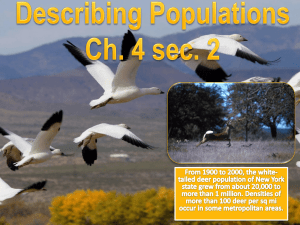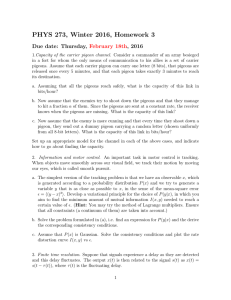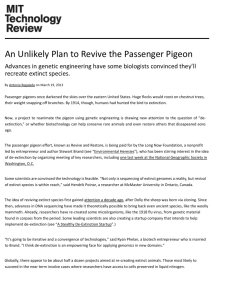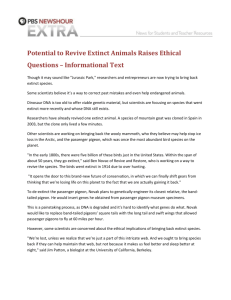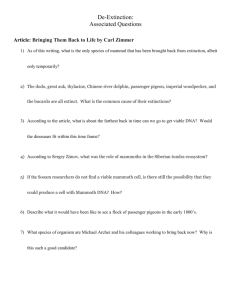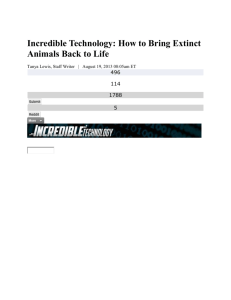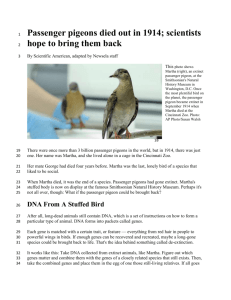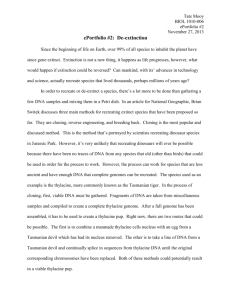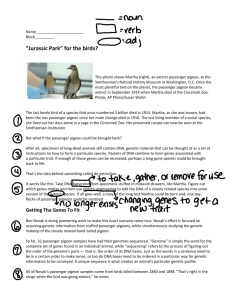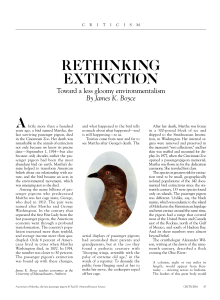Describing Populations
advertisement
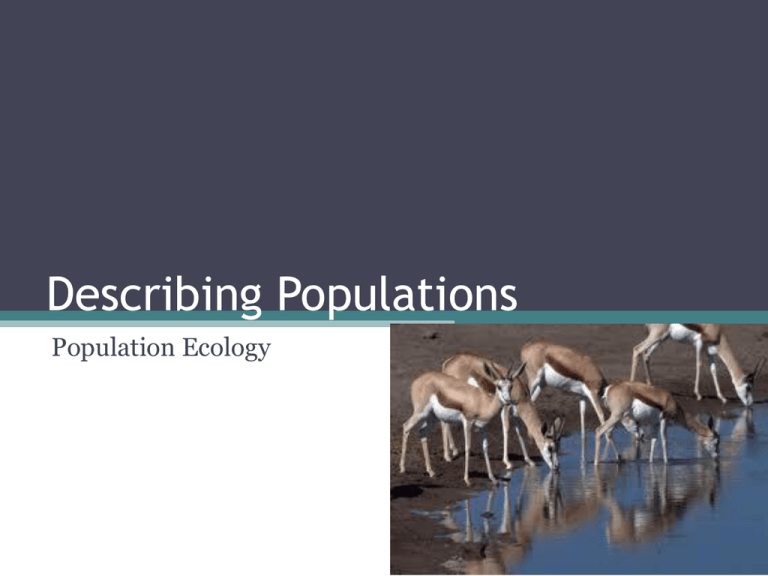
Describing Populations Population Ecology POPULATION • Individuals of the same species living in a particular area • Population size, density, distribution and age structure can help the ecologist understand how a population may grow or decline POPULATION SIZE • The overall health of a population can often be monitored by tracking how its size changes • POPULATION SIZE– Describes the number of individual organisms present in a given population at a given time • Population size may increase, decrease, undergo cyclic change, or remain the same over time. The Decline of the Passenger Pigeon • • • • Shows extremes of population size Once most abundant bird in North America Huge flocks darkened skies. In 1800’s 2 billion formed a near solid mass 240 miles long and took 5 hours to fly overhead…sounded like a tornado! • Passenger pigeons nested and bred in forests. • Forests cut down and hunted. Shipped to market as food 1898 Photograph of a Passenger Pigeon. The last wild Passenger Pigeon was shot by a 14-year-old boy in Ohio in 1900, while the last known individual of the passenger pigeon species, named "Martha" after Martha Washington, died at 1 p.m. on the 1st of September 1914 in the Cincinnati Zoological Garden. She was 29. Passenger Pigeons, Continued • By end of 1800s the population was so small the pigeons could not form needed colonies to breed. • Last passenger pigeon on Earth died in the Cincinatti Zoo in 1914 DETERMINING POPULATION SIZE • Were 2 billion pigeons actually “counted?” • Probably not—sometimes not possible • Population size is estimated using sampling techniques • We will be using a sampling technique later today in our lab! POPULATION DENSITY • Measure of “how crowded” an area is • Number of individuals within a population per unit time • Example: 1500 golden toads counted in 1987 within 4 square kilometers • Population density = 1500toads/4 square km = 375 toads/square km • In general, larger organisms like lions have lower population densities because they require more resources and room to survive Different Densities • High population density can make it easier for organisms to group together and find mates but can also lead to conflict/competition • Overcrowded = more vulnerable to predators = increase transmission of disease • Low density = may benefit from more space and resources, but harder to mate DENSITY AND THE HARLEQUIN FROG • Lived in very specific locations called “splash zones” in Costa Rica • Spash zone= area alongside rivers and streams that receive spray from waterfalls and rapids • 1980s and ‘90s Montverde region of Costa Rica got warmer and drier water flow decreased and streams dried up • Few splash zones left • Frog densities up to 4.4x higher than normal around remaining splash zones DENSITY AND THE HARLEQUIN FROG • Overcrowding= disease transmission = predator attack = assault from parasitic flies • Harlequin frog disappeared from Monteverde region but a few exist elsewhere POPULATION DISTRIBUTION • How individuals are arranged in an area • Sometimes called population DISPERSION • Three types: random, uniform and clumped RANDOM DISTRIBUTION • Individuals are arranged within a space in no particular pattern • Found where resources needed are found throughout an area UNIFORM DISTRIBUTION • Individuals evenly spaced throughout an area • When individuals hold territory or compete for space CLUMPED DISTRIBUTION • Individual organisms arrange themselves according to the availability of resources needed to survive • Most common in nature • Examples: Desert animals live in patches around isolated sources of water • Harlequin Frogs around splash zones • Humans by urban centers • Ants living in colonies AGE STRUCTURE • Describes relative numbers of organisms of each age in a population (also known as age distribution) • Age pyramids/age structure diagrams– visual tools used to show age structure of population • Can be useful for predicting population growth SEX RATIOS • Proportion of males to females • Age structure diagrams can give this information • 50:50 ratio ideal, otherwise harder for any individual to reproduce and pass on genes
